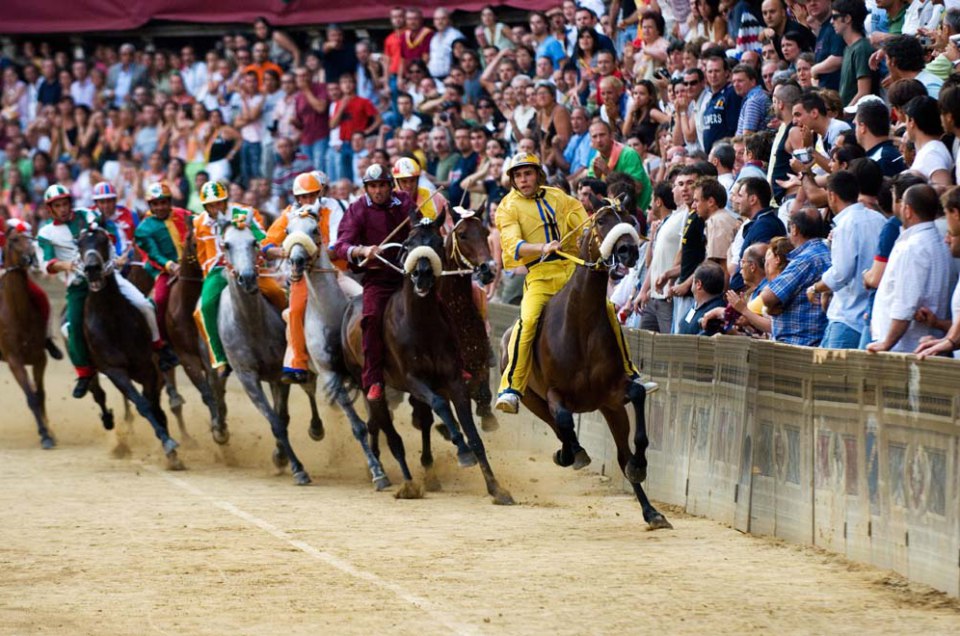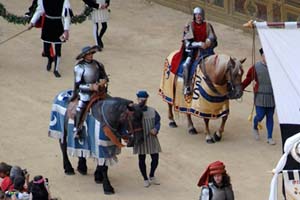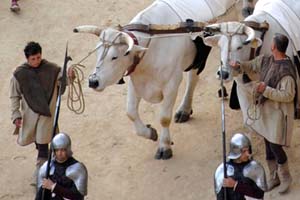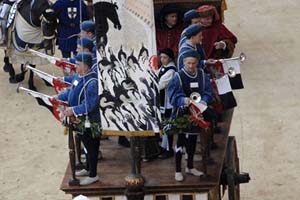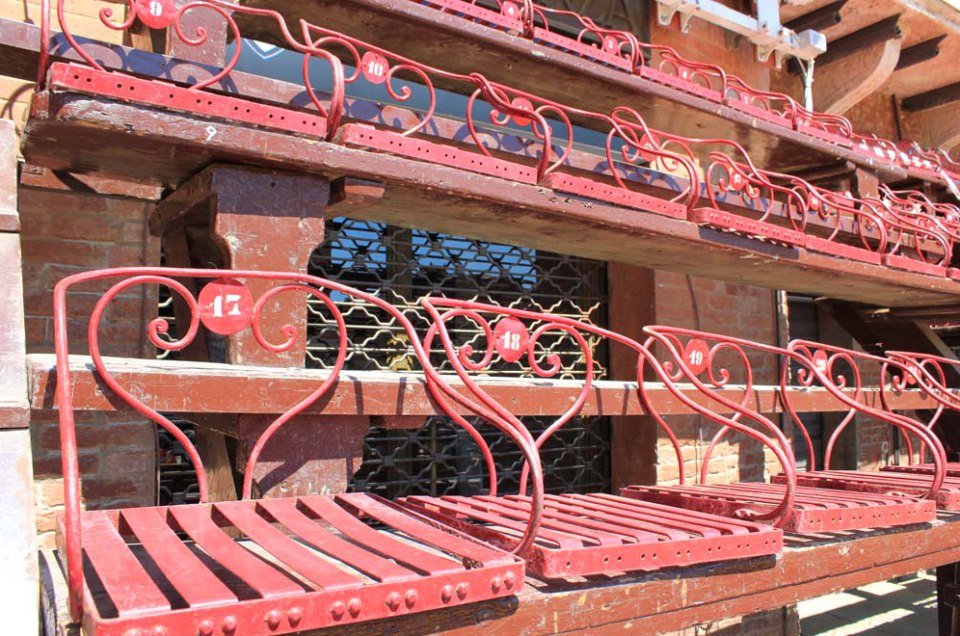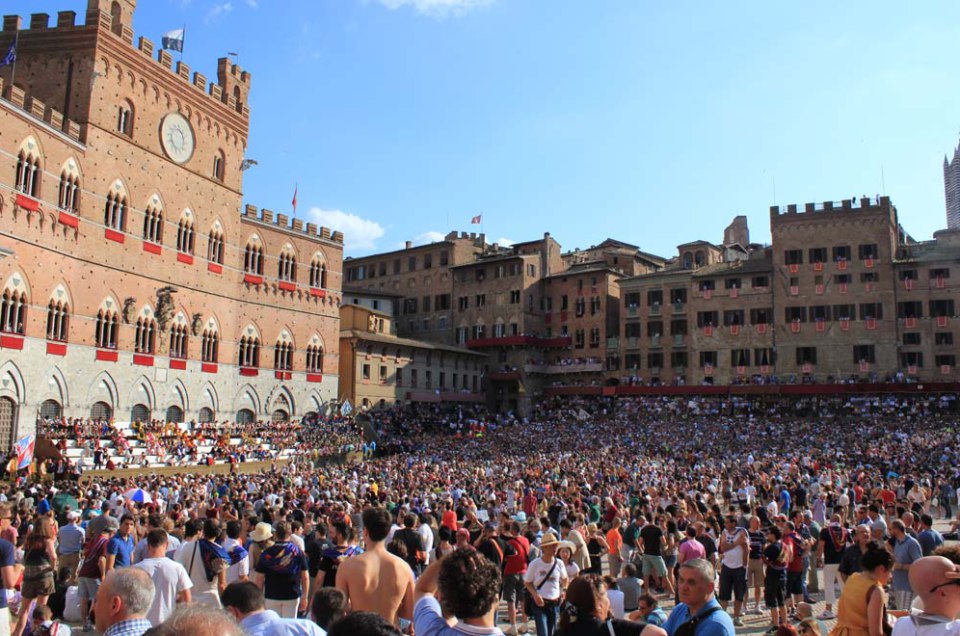We are stood in the searing July sun alongside thousands of people in the heart of Siena’s Piazza del Campo, the city’s main square. Many have been here since 11am, sat beneath their parasols which are tied to the temporary wooden barrier running around the square. It is now 7pm. Why are they crowded here on a lovely summer’s evening, rather than relaxing with an Aperol spritzer in a nearby bar?
They are here for Il Palio di Siena. It’s the horse race that makes the Kentucky Derby or the English Grand National look like a hack in the country.
Siena’s Il Palio is held twice a year (on July 2 and August 16) – you may well have seen it feature in the 2008 Bond flick Quantum of Solace.
Bareback riders from ten of the city’s 17 contrade (or districts) race for three pulsating laps of the Campo, the winner presented with the Palio (a large banner) and carried shoulder high through the streets back to their neighbourhood for much celebration.
While thousands of tourists flock to see this wonderful spectacle, the Palio is wonderfully unspoilt and principally for the Sienese.
The night before the race itself, following the second of three trial runs (the final one is at 9am on the morning of the big race), each contrada taking part holds its own street party feast. Roads are closed off, so if you’re not a local, you’ll just have to make a detour.
The 10 contrade are drawn from lots – the unlucky seven guaranteed entry into next year’s race. On the day itself, there is the magnificent pageant, the Corteo Storico, which weaves its way through Siena’s narrow cobbled streets – standard bearers, knights in armour and hundreds of years of history to take in. The first ever Palio took place in 1656, the second race in August added 45 years later.
While the race does not officially start until 7.45pm, most of us are already in the square at least an hour before. There are no toilets once inside, but a handful of stallholders sell bottled drinks and savoury snacks.
The parade is first – dozens of horses, drummers, flag bearers (who toss them high into the air and catch them to huge applause) – and a huge wagon drawn by equally large oxen.
The only music comes from the parade and a costumed orchestra in the temporary bleacher seats set up around the outside of the Campo. It’s free to watch from the centre – tickets for a seat start at around €70 ($90).
After all the build-up, it is (finally) time to race.
The only announcement made is reading out the draw for places on the start line – each contrada announced by its single word name: “Nicchio” (Seashell); “Onda” (Wave); Oca (Goose).
Riders wear their contrada’s colours – many of the jockey ‘silks’ looking alarmingly like pyjamas.
A thick, heavy rope is held up at the start line, the horses, slightly skittish by now, stand impatiently for the start. Nine are at the rope, the tenth drawn to stand at the back and, at the rider’s bidding, charges the pack to start this frenetic 90-second contest, around the sand track which has been laid over the square’s cobblestones.
The problem is, the rider can’t quite pick his moment, and for half an hour (and one false start), he and the other riders perform some kind of equine ballet – the group breaking and reforming every time one of the horses can’t quite hold still at the line.
The packed crowd – watching from every available vantage point – begins to get restless and barracks the poor rider.
Eventually, at 8.15pm, it begins.
The rope drops and the ten horses charge off down the first straight. Oca’s grey soon takes the lead, and it’s not long before one horse unseats its rider; this is commonplace.
It’s a sea of colour, noise, excitement and the sand flying up underneath the horse’s hooves.
Oca’s horse is still clear, but a second grey starts to eat into its lead, and at the final corner into the home straight, it is gaining ground with every stride.
Oca’s man holds off however, and at the line his supporters, wearing the contrada’s green and red neck scarves, spill over the barrier to greet their new hero. He is hoisted onto their shoulders and he – and the Palio banner – are carried out of the square and along the narrow streets, back to their neighbourhood – doubtless for a long night of celebration.
One thing’s for sure – the winning rider won’t be buying a drink any time soon.
All too soon it is over, but well worth the wait.
Alongside the Running of the Bulls in Pamplona, hiking to Machu Pichu and climbing Kilimanjaro, this is a must for anyone’s Bucket List. Happily, we can simply watch this phenomenal spectacle. Riding in the Palio must be something else.
For more information visit Discover Tuscany. Jon stayed at Chiostro del Carmine, a renovated Carmelite convent.
